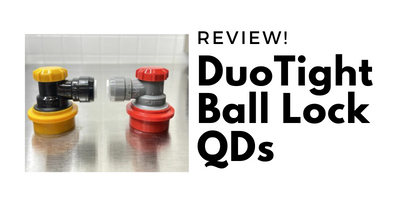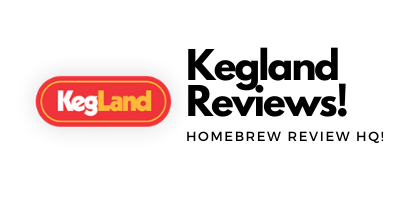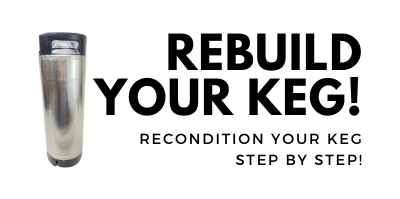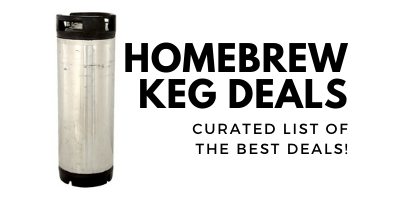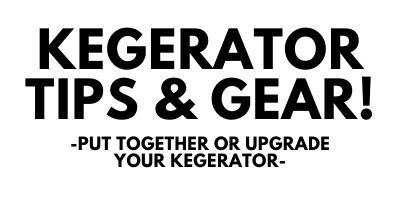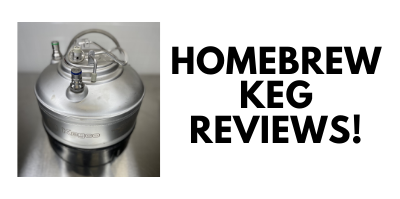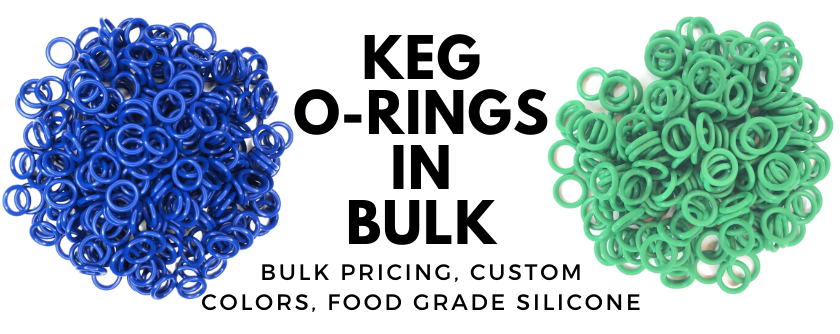
Hands on Review: Kegland 2.5 Gallon Ball Lock Kegs!

Updated: January 7, 2025
Kegland, based in Australia, produces a broad array of homebrewing gear. fermenters, electric brewing systems, loads of draft stuff (including DuoTight!) and lots more.
It’s obvious these folks are homebrewers at heart, because they’ve come up some really innovative stuff. The other thing they’ve generally done is hit really good price points. There is a balance between cost, features and quality and they seem to be hitting a lot of bullseyes.
This is an in depth hands on look at Kegland’s 2.5 gallon ball lock keg.
Why a 2.5 Gallon Keg?
2.5 gallon kegs are great for splitting batches, small batch brewers, doing one-off beers from split from a 5 gallon batch… or for easily serving on the go. Purge with CO2, fill from your tap and place in ice in a 5 gallon bucket…. whammo! You can also use these in conjunction with an inline secondary as a CO2 source for portable serving.
Related: Hands on Review: 5 Gallon Kegland Ball Lock Kegs
Hands on Review Kegland 2.5 Gallon Ball Lock Keg
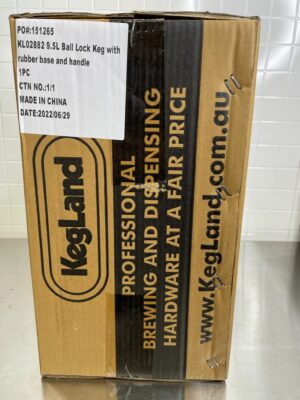 A look at the box
A look at the box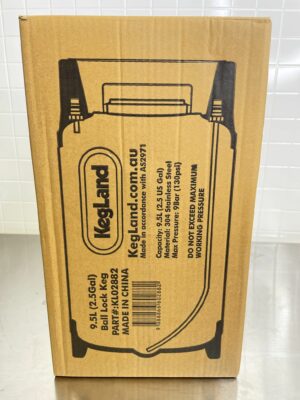 The other side of the box. This is one of the better looking keg boxes I’ve run across.
The other side of the box. This is one of the better looking keg boxes I’ve run across.
Check Current Prices, Models and Availability:
- Kegland Kegs at MoreBeer
- Kegland Kegs at William’s Brewing
- Kegland 2.5 Gallon Ball Lock Corny Keg at Keg Outlet
- Kegland Cornelius (Corny) Keg – Stainless Steel 5 Gallon Ball Lock – via SoCal Brewing Supply
- New Cornelius Keg – 5 gal Kegland (Ball lock) via Amazon
This article contains affiliate links. We may make a small percentage if you use our links to make a purchase. You won’t pay more and you’ll be supporting Homebrew Finds and more content like this. Thank you for your support!
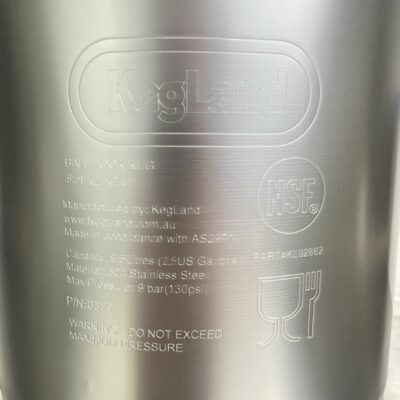 A look at the keg imprint
A look at the keg imprint
Tip: If you’re looking for replacement parts look for your keg’s imprint. It should show the manufacturer and model number.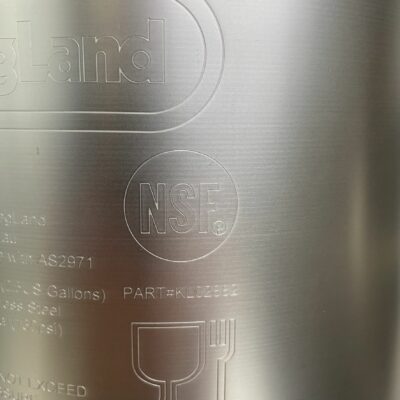 Close up of the NSF certification
Close up of the NSF certification Close up of the specifications section of the keg imprint. Manufactured by Kelgand. Made in accordance with AS2971. Capacity: 9.5 Litres (1.5 US Gallons). Material: 304 Stainless Steel. Max Pressure: 9 bar (130psi). P/N: 0322. Part#KL02882. WARNING – DO NOT EXCEED MAXIMUM PRESSURE.
Close up of the specifications section of the keg imprint. Manufactured by Kelgand. Made in accordance with AS2971. Capacity: 9.5 Litres (1.5 US Gallons). Material: 304 Stainless Steel. Max Pressure: 9 bar (130psi). P/N: 0322. Part#KL02882. WARNING – DO NOT EXCEED MAXIMUM PRESSURE.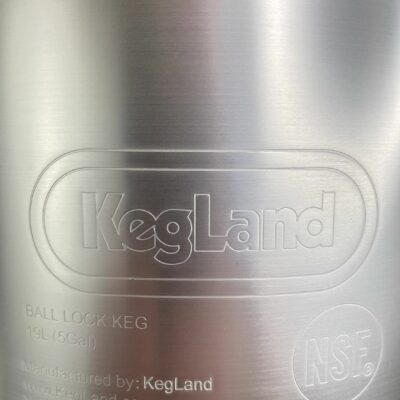 Close up of the Kegland logo
Close up of the Kegland logo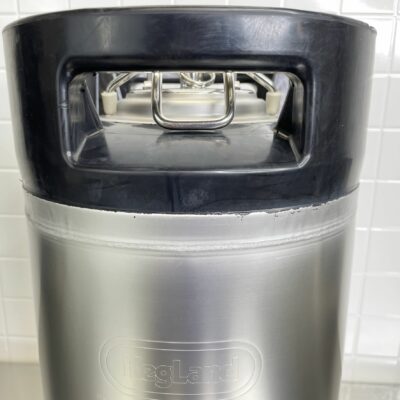 A look at the top of the keg including one of the double rubber handles
A look at the top of the keg including one of the double rubber handles
Single Handle vs Double Handle: There are two main styles of keg handles – double rubber handles and single strap handles. I prefer double handles because… you’ve got two handles 🙂 and, more importantly, the even top means you can invert a keg to drain or dry and potentially stack kegs. Single strap handle kegs are tougher to invert, but they’re also generally a little less expensive.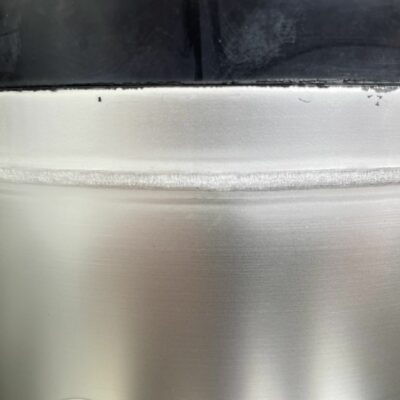 A look at the top weld. This looks good.
A look at the top weld. This looks good.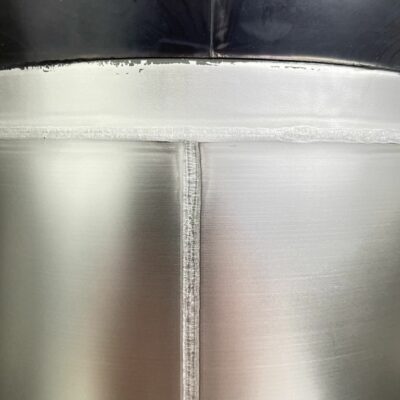 Close up of the T, where the vortical weld meets the top most weld. Generally speaking the body of a keg is cut from a sheet of stainless steel. A rectangle is bent into a cylinder and then welded. This vertical line is that weld.
Close up of the T, where the vortical weld meets the top most weld. Generally speaking the body of a keg is cut from a sheet of stainless steel. A rectangle is bent into a cylinder and then welded. This vertical line is that weld.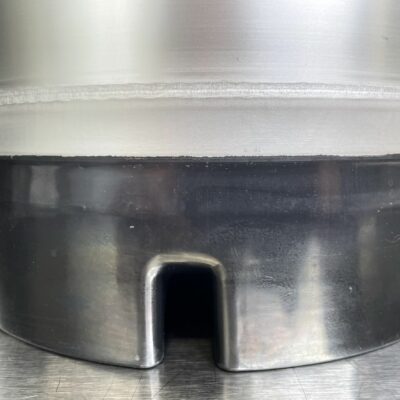 A side view of the bottom of the keg. These notches are designed to allow for airflow. That’s a great thing. You can also get a good look at the bottom most weld.
A side view of the bottom of the keg. These notches are designed to allow for airflow. That’s a great thing. You can also get a good look at the bottom most weld.
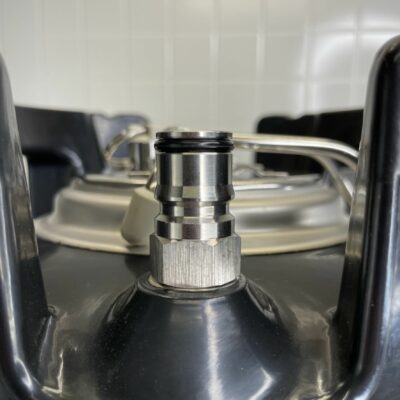 A look at the liquid out post. There are two ways to differentiate between the liquid and gas posts. The gas post generally has a notch. As you can see this is the liquid post and it doesn’t have a notch.
A look at the liquid out post. There are two ways to differentiate between the liquid and gas posts. The gas post generally has a notch. As you can see this is the liquid post and it doesn’t have a notch.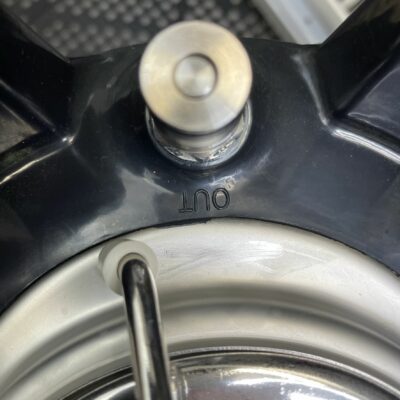 The other way to tell on this keg is that each post is labeled. The liquid out post is labeled “OUT”.
The other way to tell on this keg is that each post is labeled. The liquid out post is labeled “OUT”.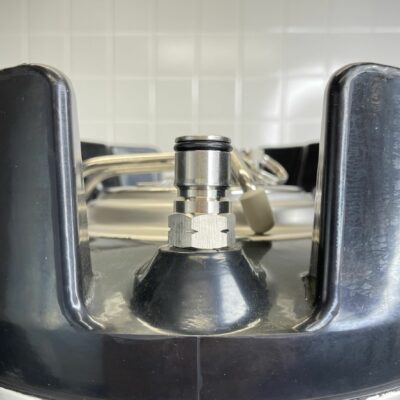 Gas in post. Notice the notches
Gas in post. Notice the notches
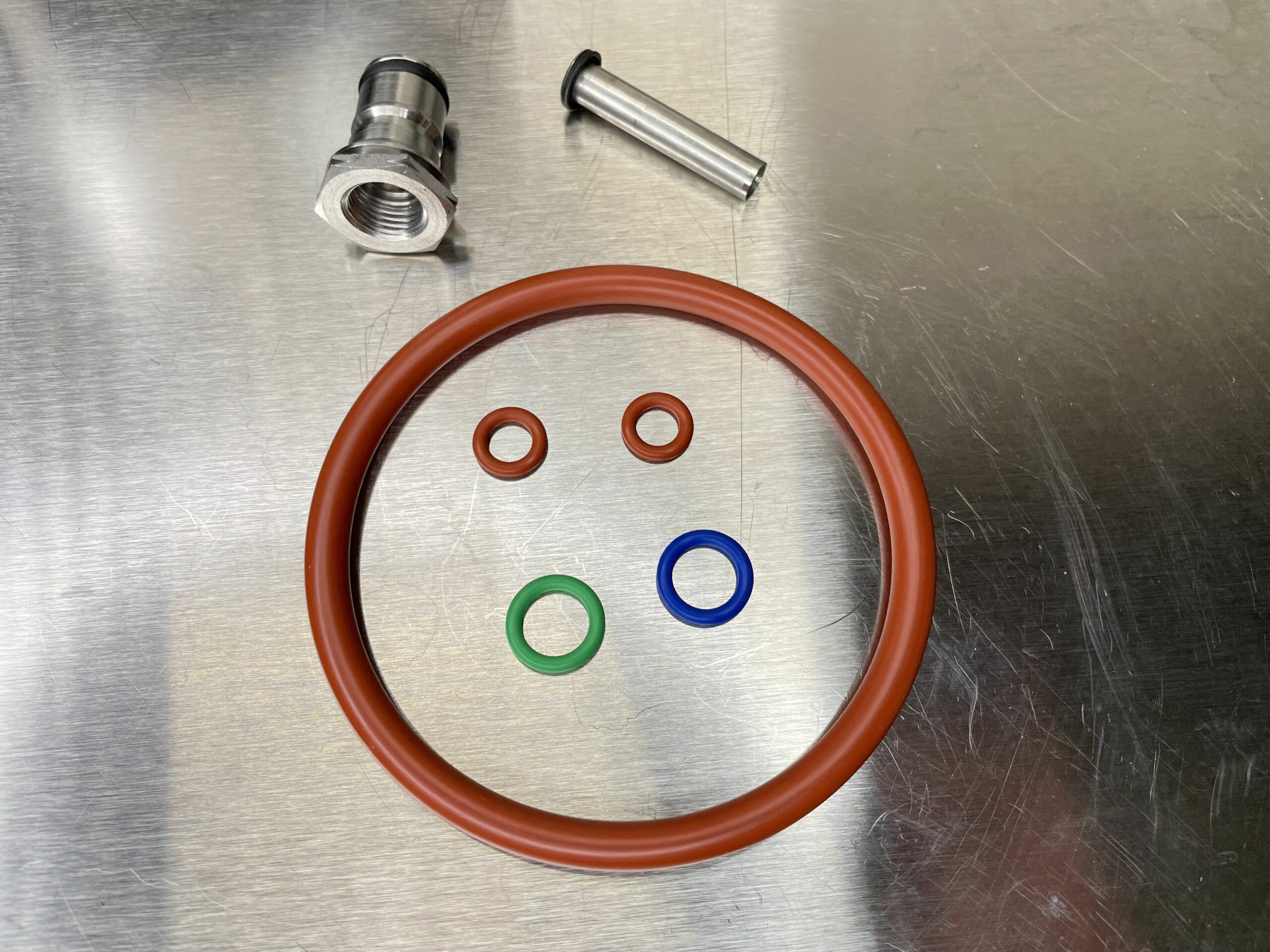 Since doing my post on reconditioning kegs, I’ve gotten into the habit of immediately replacing all o-rings with Valuebrew Food Grade Gaskets. I use green and blue for the posts to make identification quick and easy… green = gas, blue = beer. It’s worth noting that this isn’t something you have to do, I prefer food grade silicone and the color-coding and I have these on hand since I picked them up in bulk. Very little cost on a per o-ring basis making these upgrades.
Since doing my post on reconditioning kegs, I’ve gotten into the habit of immediately replacing all o-rings with Valuebrew Food Grade Gaskets. I use green and blue for the posts to make identification quick and easy… green = gas, blue = beer. It’s worth noting that this isn’t something you have to do, I prefer food grade silicone and the color-coding and I have these on hand since I picked them up in bulk. Very little cost on a per o-ring basis making these upgrades.
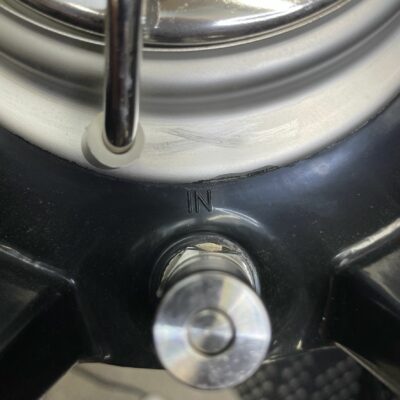 Also labeled IN
Also labeled IN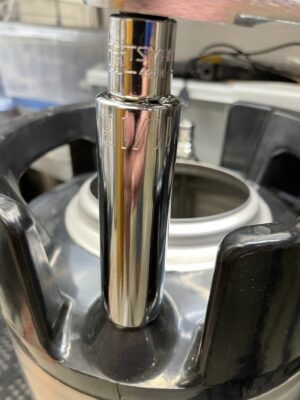 This keg features 6 point 11/16″ posts. See: Hands on Review: “Ball Lock Keg Wrench” – 11/16″+7/8″ Ratcheting Wrench and Craftsman Keg Socket Review
This keg features 6 point 11/16″ posts. See: Hands on Review: “Ball Lock Keg Wrench” – 11/16″+7/8″ Ratcheting Wrench and Craftsman Keg Socket Review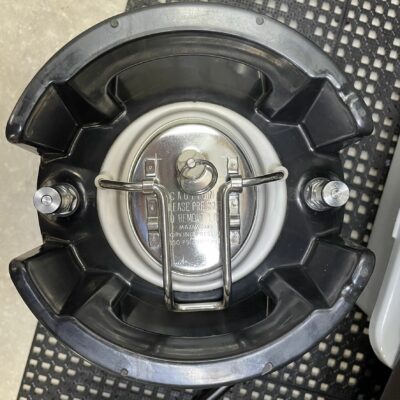 Top down look
Top down look
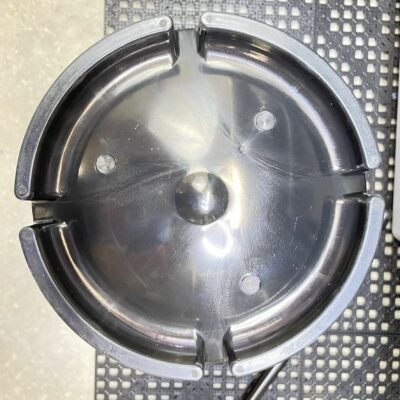 A look at the bottom. Nice quality, shiny rubber. Notice the notches for airflow.
A look at the bottom. Nice quality, shiny rubber. Notice the notches for airflow.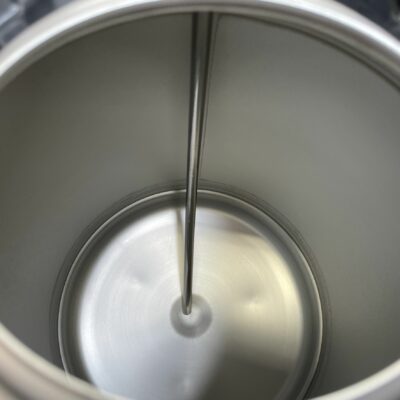 A look inside the keg. It looks beautiful. The stainless looks great and all visible components and welds look great.
A look inside the keg. It looks beautiful. The stainless looks great and all visible components and welds look great.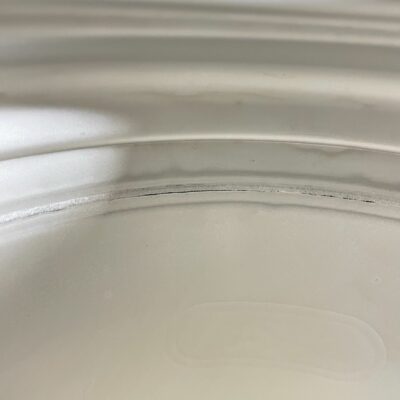 A look at the inside seam.
A look at the inside seam.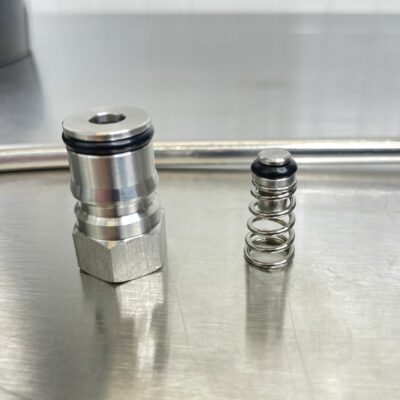 A look at the keg post. Like a lot of kegs these days, this Kegland keg features universal poppets. Related: Universal Poppet Tips & Trick
A look at the keg post. Like a lot of kegs these days, this Kegland keg features universal poppets. Related: Universal Poppet Tips & Trick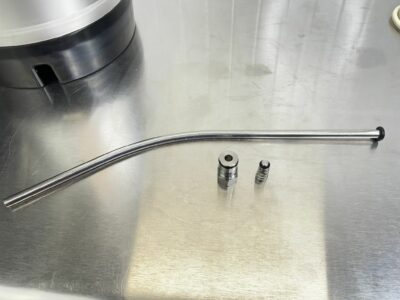 Liquid out dip tube and post
Liquid out dip tube and post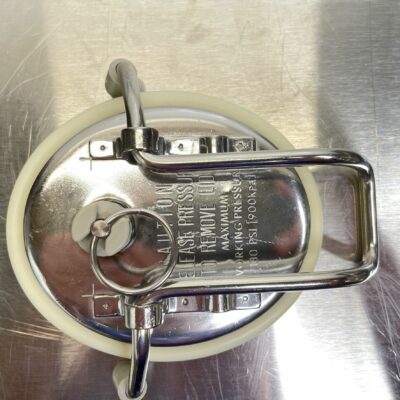 The lid
The lid
More About Keg Lids: One difference between Pin Lock and Ball Lock kegs is the type of lids that come with each. Ball Locks, generally, have a manual PRV valve, while Pin Locks do not. Ball Lock style lids are, in my opinion, superior because the manual PRV allows you to easily vent your keg as needed. The good news is that, for standard kegs, the lids are the same size and can be interchanged. That means you can use a Ball Lock style lid in a Pin Lock Keg. See: What’s the Difference Between Ball Lock Kegs and Pin Lock Kegs?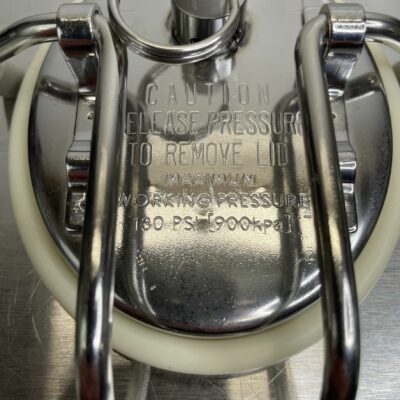 Close of up of the lid. Reads… Caution Release Pressure to Remove Lid. Maximum Working Pressure 130 PSI.
Close of up of the lid. Reads… Caution Release Pressure to Remove Lid. Maximum Working Pressure 130 PSI.
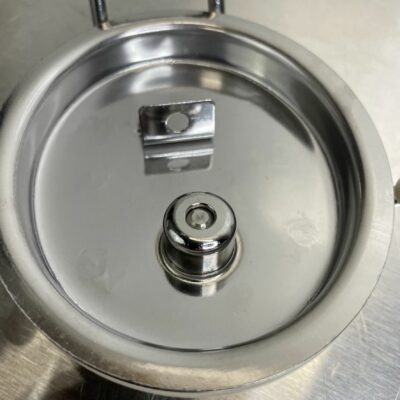 Underside of the lid.
Underside of the lid.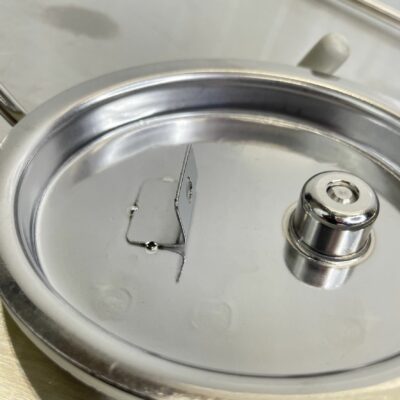 Kegland keg lids have a unique feature. This tab on the understand is called a Hang Tab. It’s designed to allow you to easily hang dry hops, cocoa nibs, oak and more from the lid. To use, thread the string of your hop bag through the hole. This makes removal easy and allows you to control the exact amount of time and saves you from trying to fish around in your beer. This is another thoughtful Kegland innovation.
Kegland keg lids have a unique feature. This tab on the understand is called a Hang Tab. It’s designed to allow you to easily hang dry hops, cocoa nibs, oak and more from the lid. To use, thread the string of your hop bag through the hole. This makes removal easy and allows you to control the exact amount of time and saves you from trying to fish around in your beer. This is another thoughtful Kegland innovation.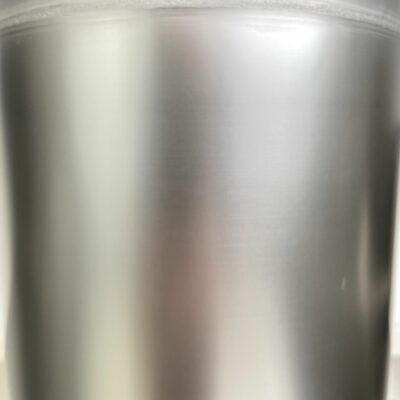 A close up of the body. The 304 stainless steel seems high quality. I would call this a semi-matte finish.
A close up of the body. The 304 stainless steel seems high quality. I would call this a semi-matte finish.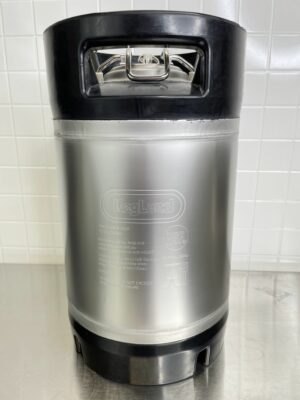 Kegland’s 2.5 Gallon Ball Lock Keg!
Kegland’s 2.5 Gallon Ball Lock Keg!
Dimensions
Approximately 15″ tall, and 8½” wide
Conclusions
This is a high quality ball lock keg. Build quality is good and it looks great. Kegland usually sneaks in some innovation and they did the same with these kegs. The hang tab is a nice feature that makes dry hopping easier. Beyond that these standout for their excellent quality and the fact that they’re generally well priced.
Check Current Prices, Models and Availability:
- Kegland Kegs at MoreBeer
- Kegland Kegs at William’s Brewing
- Kegland 2.5 Gallon Ball Lock Corny Keg at Keg Outlet
- Kegland Cornelius (Corny) Keg – Stainless Steel 5 Gallon Ball Lock – via SoCal Brewing Supply
- New Cornelius Keg – 5 gal Kegland (Ball lock) via Amazon
Related: Portable Draft Serving Options
More Kegland Keg Reviews:
- Hands on Review: Kegland Ball Lock Kegs
- Hands on Review: Ball Lock Keg Growler by Kegland
- All of Our Keg Reviews
Should I buy a New Keg or a Used Keg?
Used kegs are generally sourced from soda bottlers. They are built with commercial use in mind and designed to last for many years of rough duty service.
Brand new ball locks may not be made to the same standards. However… We also don’t generally put our kegs through the same abuse that a soda distributor would.
Not withstanding price. I think both options are valid. If you’re up for a little elbow grease and replacing a few parts, used may be the way to go, if you’re more interested in convenience brand new is a good choice. Practically, at least as of this posting, I think price will cause many to go the used route.
Related – Use a Spare Keg as a CO2 Source!
Related – Kegland DuoTight Ball Lock QDs…
Also from Kegland, DuoTight & EVABarrier Tubing
duotightreviewMore Kegland Gear Reviews!
Rebuild Your Used Kegs
Keg Deals!
kegdealsEverything For Your Kegerator!
More Keg Reviews!
Food Grade Keg O-rings in Bulk!
More Homebrew Finds!
- Last 50 Finds!
- Top Deals – a curated list of the best deals
- Homebrew Reviews – one of the largest libraries of homebrew reviews in existence!
- Our Top Posts – tips, how-tos, resources posts and more
This post may contain affiliate links. We may make a commission when you use our links. This will never cost you extra. Thank you for supporting Homebrew Finds!
greatdealsAlso: Kegerator Tips & Gear | Keg Repair Part #s | Recent Keg Finds
Our Top Draft Resources!
Check our our Top Draft Related Resources
- Commentary: Pin Lock Keg Pricing and Availability
- Check Your CO2 Regulator for Leaks!
- How to get a keg ready for first use? New Keg Cleaning and Prep
- Portable Draft Beer Serving Options!
- Pin Lock Keg Pricing and Availability
- The Most Difficult Spot to Check for CO2 Leaks
- Keg O-Ring Materials Selection! – EPDM, Silicone and Buna-N?
- Why Do I Have Bubbles in My Beer Line? Diagnosing and Fixing Kegerator Foam Problems
- Five Benefits of Using Corny Kegs As Fermenters
- Rebuilding & Reconditioning Homebrew Kegs!
- Food Safe Replacement Keg O-Rings in Bulk
- Hands on Review: Kegland DuoTight Fittings & EVABarrier Tubing!
- Why Won’t My Beer Carbonate? Fixing Draft Beer Carbonation Problems
- What Does a Flow Control Faucet Do?
- Upgrade Your Kegerator – 6 Improvements!
- Serve Homebrew on Any Kegerator & Convert Commercial Kegerator to Homebrew
- Tips and Gear for Growler Filling
- What’s the Difference Between Ball Lock Kegs and Pin Lock Kegs?
- Checking for Draft System CO2 Leaks – Using The Pressure Gauge Method
- Tip: Consider Oetiker Stepless Clamps for Kegerator Gas and Beer Lines
- Hands On Review: Inkbird ITC-308 Dual Stage Temperature Controller +WiFi Version
- Universal Poppets Tips and Tricks!
- Convert Your Mark II Keg & Carboy Washer to a Recirculating Draft Line Cleaning Pump!
- Step by Step: Finding and Fixing Keg CO2 Leaks
- Kegerator Temperature Probe Placement – To Immerse or Not To Immerse? – three tests to determine optimal pla…
- Kegerator Beer Line Temperatures & Reducing Foam with a Recirculating Fan
- Kegging CO2 Use Estimations and Calculations
- Balancing Your Kegerator Draft System
- Building a Simple Ball Lock Draft Line Flushing Setup
- Build a Recirculating Draft Line Cleaning Pump
- Home Brew Keg Roundup – New & Used, 5 and 2.5 Gallon & More!
- Damp Kegerator? Fix Kegerator Condensation
- Homebrew Temp Controller Roundup! – Kegerator and Fermentation – concepts, applications and models
- Bulk Keg Orings and Keg Parts Reference
Special thanks to Kegland for providing the keg used for evaluation in this review.
Price, promotions and availability can change quickly. Check the product page for current price, description and availability.
Make sure the components you use are compatible and rated for your intended application. Contact manufacturer with questions about suitability or a specific application. Always read and follow manufacturer directions. tag:lnksfxd review:2.5klkeg tag:tpr












